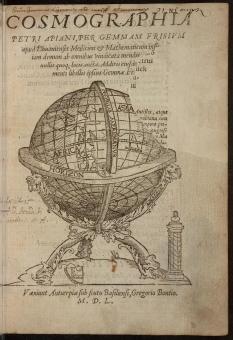For about 400 years, Johannes Sacrobosco’s Tractatus de sphaera was one of the most important texts of European astronomical culture. The original text, written around 1230, was copied many times during the fourteenth and fifteenth centuries and was issued in printed form as early as 1472, before any other astronomical work.
The following 200 years witnessed a proliferation of new editions and commentaries: around 200 editions in the sixteenth century alone. Generations of students of the artes liberales were introduced to astronomy using this tractatus. Its dissemination and employment for teaching purposes show an extraordinary continuity over the centuries. Moreover, Sacrobosco offered a model for other introductory textbooks. Apart from the commentaries, summaries were also published, especially in the form of quaestiones in Sphaeram (e.g., Beyer’s Quaestiones novae in libellum de Sphera in the sixteenth century). New introductions to spherical astronomy closely followed Sacrobosco’s model, as was the case with Sebastian Münster’s Organum uranicum (Basel, 1536), Kaspar Peucer’s Elementa doctrinae de circulis coelestibus et primo motu (Wittenberg, 1563), Michael Mästlin’s Epitome astronomiae (Heidelberg, 1582), and even Galileo Galilei’s posthumous Trattato della sfera (Rome, 1656). In addition, other introductions to spherical astronomy competed with Sacrobosco, e.g., al- Farghani’s Elementa astronomica, Grossatesta’s De sphaera and especially Proclus’s Sphaera, which was regarded as a Platonic-humanistic and anti-Scholastic alternative to Sacrobosco. A consideration of such books, which are numerous indeed, can help to identify the Sphaera-literature as a scientific genre. This project was aimed in particular at a reconstruction of the tradition of spherical astronomy, which is marked by gradual changes, despite the apparent stability of the genre.

